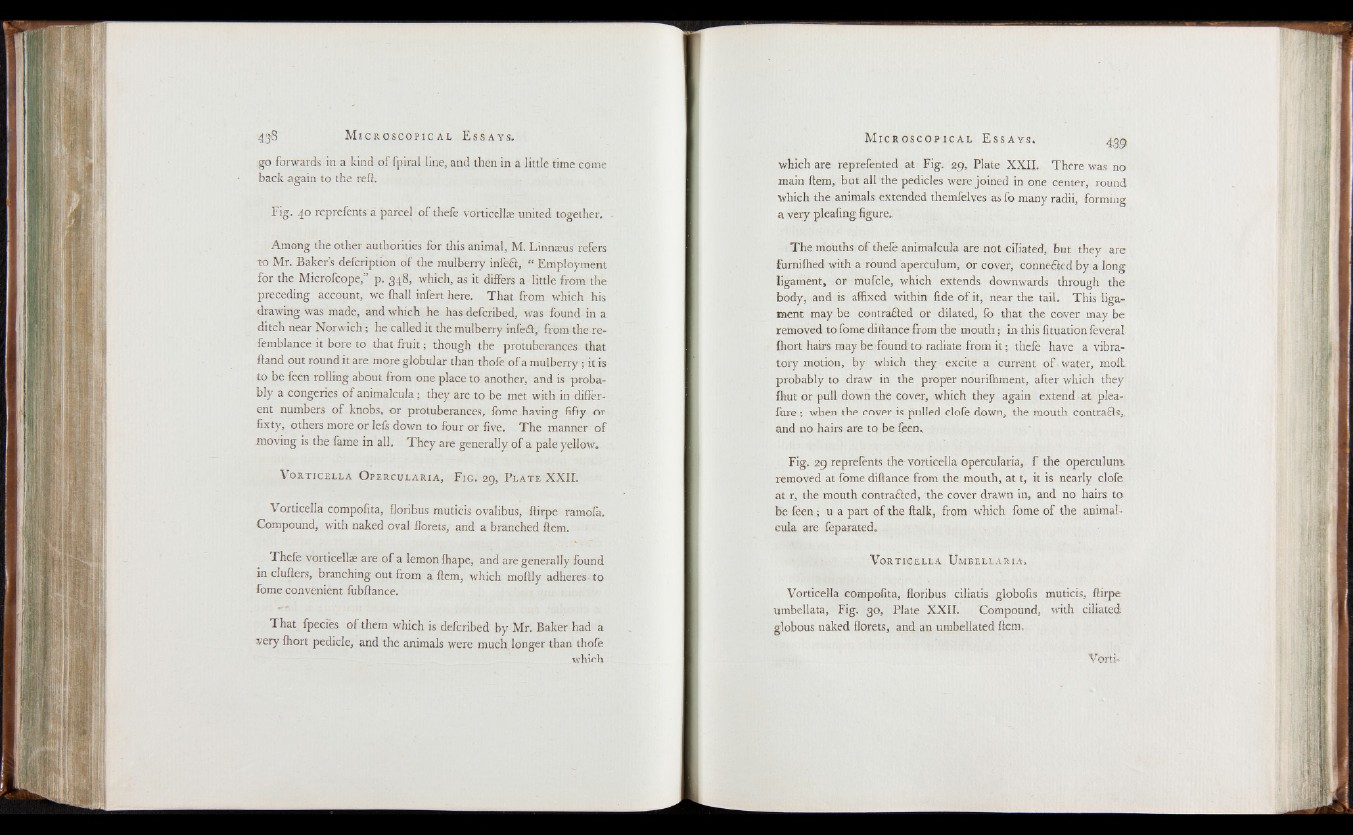
M 43s i c r o s c o p i c a l E s s a y s .
go forwards in a kind of fpiral line, and then in a little time come
back again to tl IQ reft.
Fig. 40 reprefentsa parcel o f thefe vorticelke united together.
Among the other authorities for this animal, M. Linnaeus refers
to Mr. Baker’s defcription of the mulberry infe£i, “ Employment
for the Microfcope,” p. 348, which, as it differs a little from the
preceding account, we lhall infert here. That from which his
drawing was made, and which he has defcribed, was found in a
ditch near Norwich; he called it the mulberry mfefl,. from the re-
femblance it bore to that fruit; though the protuberances that
Hand out round it are more globular than thofe o f a mulberry ; it is
to be feen rolling about from one place to another, and is probably
a congeries o f animalcula; they are to be met with in different
numbers o f knobs, or protuberances, fome having fifty or
fix ty, others more or lefs down to four or five. The manner of
moving is the fame in all. They are generally o f a pale yellow.
V orti cella Operculari a, Fig. 2g, Plate XXII.
Vorticella compofita, floribus muticis ovalibus, ftirpe ramofa.
Compound, with naked oval florets, and a branched ftem.
Thefe vorticellse are o f a lemon fhape, and are generally found
in clufters, branching out from a ftem, which moftly adheres to
fome convenient fubftance.
That fpecfes o f them which is defcribed by Mr. Baker had a
very fhort pedicle, and the animals were much longer than thofe
which
M i c r o s c o p i c a l E s s a y s . 439
which are reprefented at Fig. 29, Plate XXII. There was no
main ftem, but all the pedicles were joined in one center, round
which the animals extended themfelves as fo many radii, forming
a very pleafing figure.
The mouths o f thefe animalcula are not ciliated, but they are
furnifhed with a round aperculum, or cover, connefted by a long
ligament, or mufcle, which extends downwards through the
body, and is affixed within fide o f it, near the tail. This ligament
may be contracted or dilated, fb that the cover may be
removed to fome diftance from the mouth; in this fituation feveral
fhort hairs may be found: to radiate from i t ; thefe have a vibratory
motion, by which they excite a current o f water, moft
probably to draw in the proper nourifhment, after which they
fhut or pull down the cover, which they again extend, at plea-
fure ; when the cover is pulled clofe down, the mouth contracts,
and no hairs are to be feen.
Fig. 29 reprefents the vorticella opercularia, f the operculum,
removed at fome diftance from the mouth, at t, it is nearly clofe
at r, the mouth contrafted, the cover drawn in, and no hairs to
be feen ; u a part of the ftalk, from which fome of the animalcula
are feparated.
V orticella Umbellari a,
Vorticella compofita, floribus cilratis globofis muticis, ftirpe
umbellata, Fig. 30, Plate XXII. Compound, with ciliated
globous naked florets, and an umbellated ftem,
Vorti